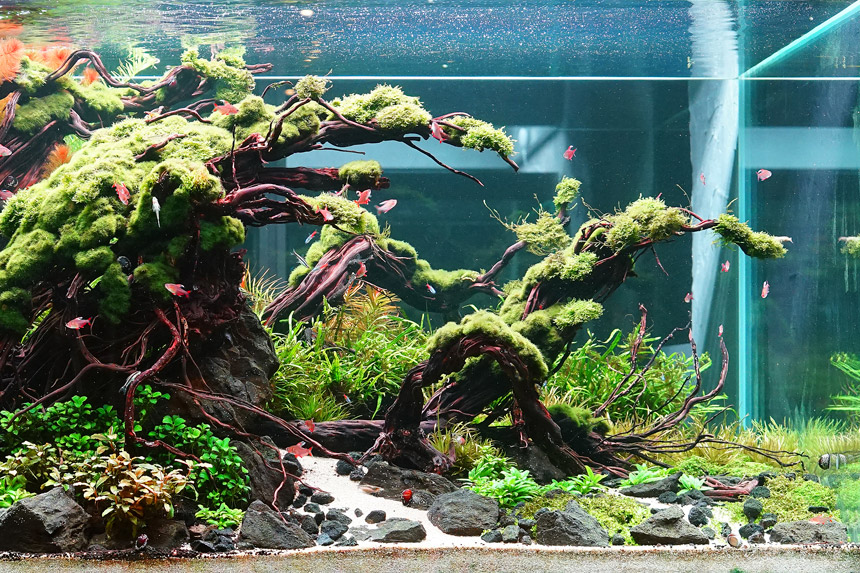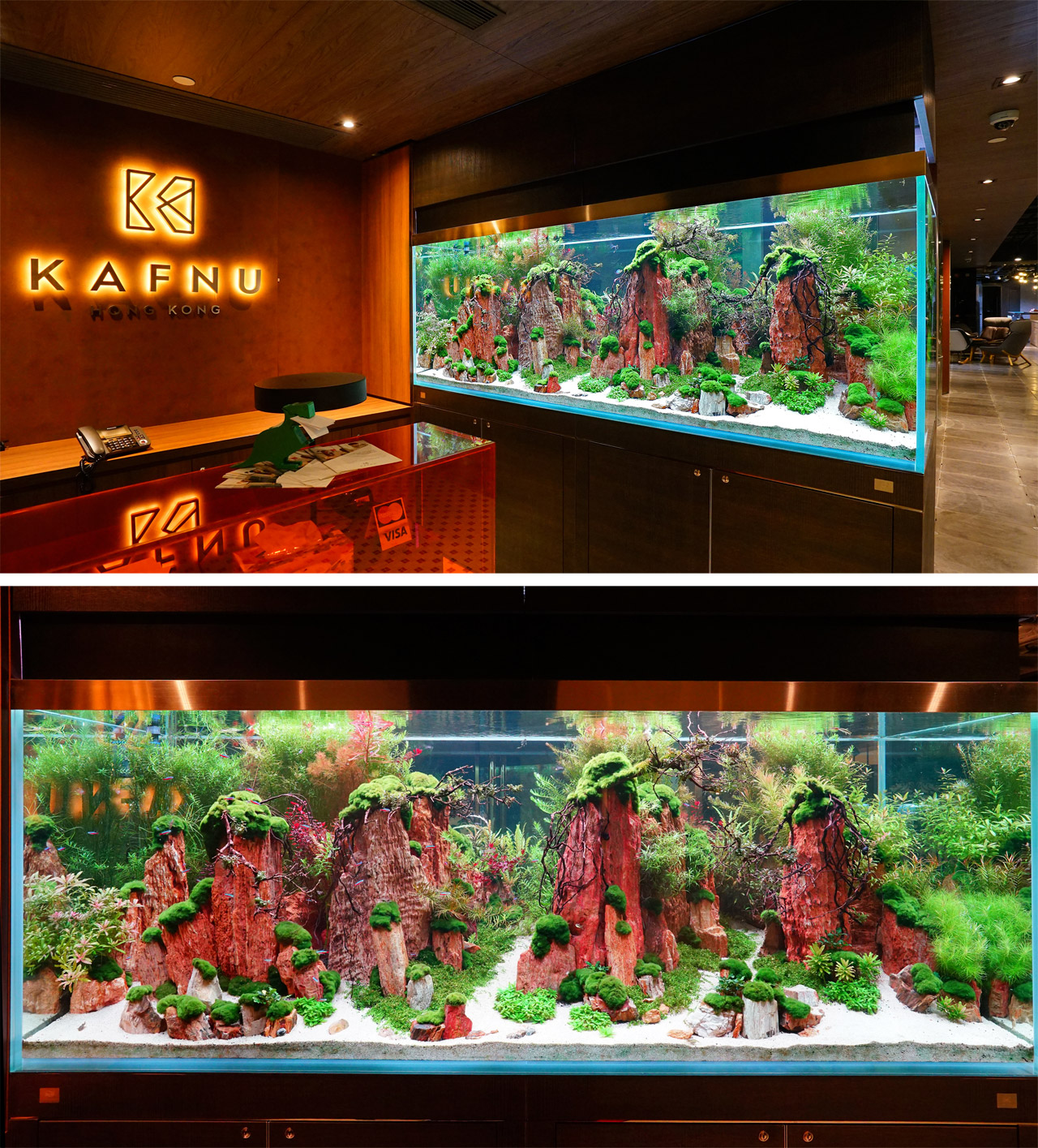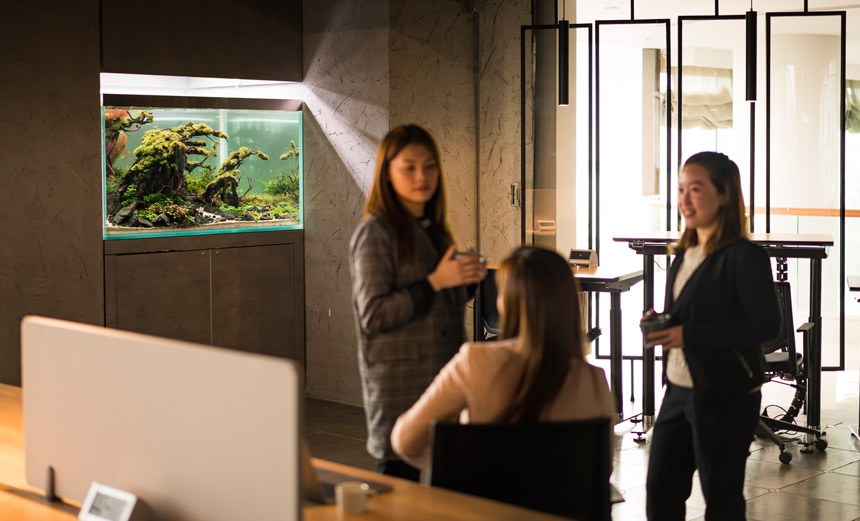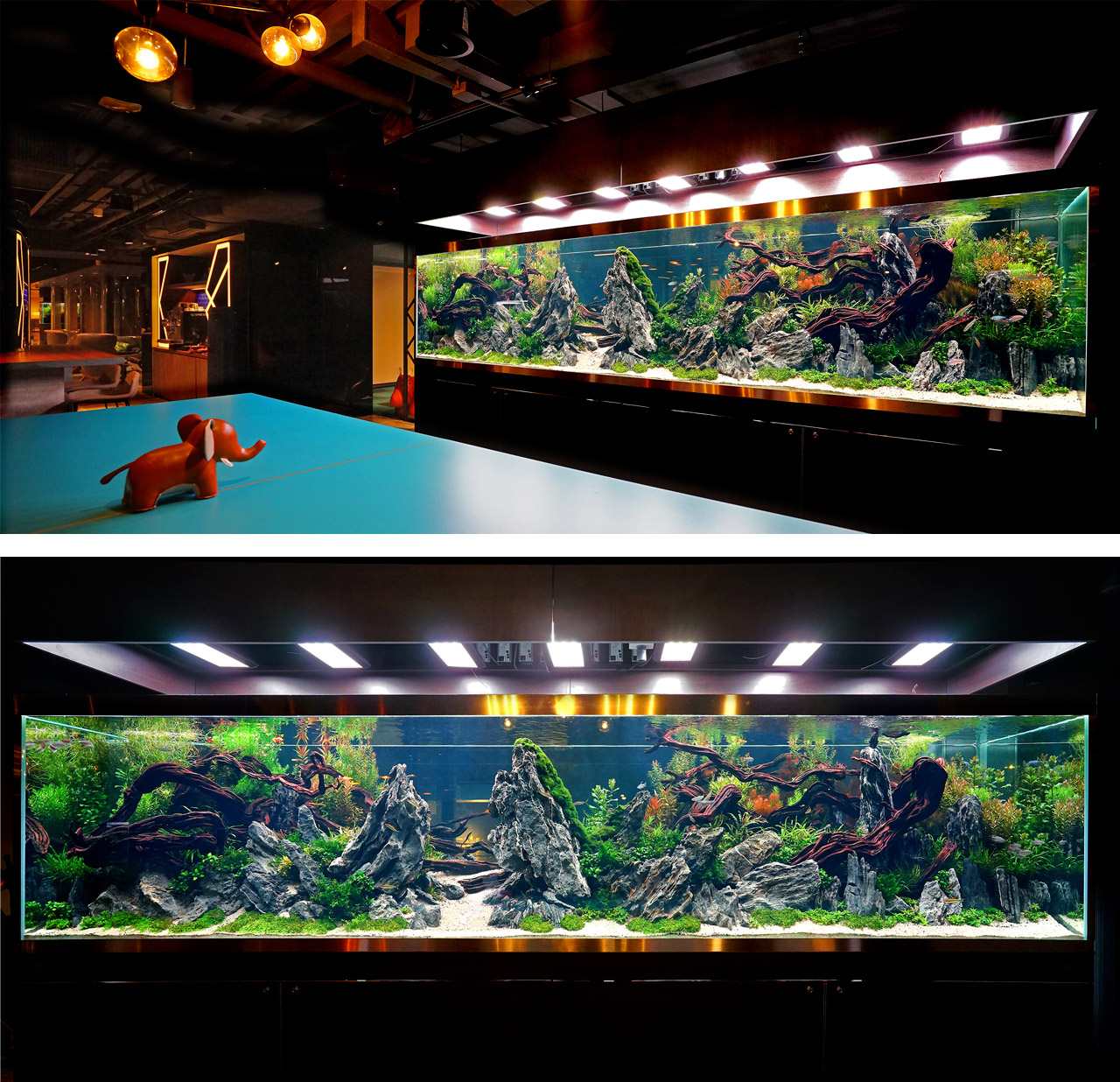Pioneered by the Dutch as early as the 1930s, the landscaped underwater garden was embraced by Japanese aquarist Takashi Amano in the 1990s.
Now Hongkonger Dave Chow, the city’s leading aquascape designer, is creating them for Hong Kong homes and, most recently, has crafted a series for co-working space Kafnu at Kerry Hotel Hong Kong. We speak to the underwater gardener about his art.

While working in advertising design I had started keeping fish at home for the purposes of feng shui but I found it a little boring. I started learning about aquatic plants and found that I wanted to apply my creativity and design knowledge to scape plants beautifully in aquariums. That’s how I started aquascaping.
In 2002 I entered an international competition for aquascaping held by ADA, an aquarium design company from Japan. After competing for a few years I was named champion in 2007 and soon after that I entered the aquascaping business full-time.
See more: On The Peak, a 7,500sqft zen sanctuary for a Buddhist family

With aquascaping, you can create fascinating scenes – they come out like an artistic drawing.
Many people like aquascapes as they are good for feng shui. I am not an expert in feng shui but water tanks are thought to bring fortune and luck and to prevent bad things from happening. I often put them in the entrance of a home or office to help the flow of the space.
With aquascaping, you can create fascinating scenes. The tank, for example, is like a canvas, and the aquatic plants, stones and driftwood are like the painting materials. The aquascapes come out like an artistic drawing.

Fish are not the main character of an aquascape, but they are important. They help to fertilise the plants to ensure they grow well, photosynthesise and produce oxygen, ensuring a healthy ecosystem.
The Japanese style of aquascapes is called iwagumi and may incorporate just one species of aquatic plant to create a zen feeling. Most Hongkongers will not follow this style because they find it more interesting to keep several kinds of plants. My own style is to create movement. I use stones and driftwood to make tanks with a lot of movement and energy inside.
See more: Be your own florist: 8 tips from Solomon Bloemen

Regular maintenance is required to keep an aquascape beautiful. Plants need to be trimmed and water must be changed – sometimes weekly or at least twice a month.
Aquascapes are not normal aquariums, nor are they just about aquatic plants; they are about using materials to express oneself. Aquascaping is not simply a hobby; it is modern art. The plants are growing; the fish are alive. This is living art.
For guidance on a more conventional form of gardening, check out our expert’s guide to urban and rooftop farming.
The post Planting art: Aquascape artist Dave Chow on underwater creativity appeared first on Home Journal.






